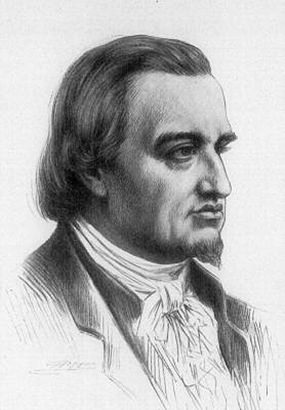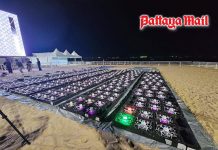
If the title seems familiar, it’s probably because the Austrian composer Gustav Mahler used it for his 1909 work Das Lied von der Erde. The previous year saw the publication of a collection of early Chinese poetry translated into German. It included poems by the eighth century poet Li Bai of the Tang Dynasty. Mahler was so impressed with the lightness of touch that he set seven of the poems to music in an impressive work for voices and orchestra lasting for over an hour. It was performed in London in 1913 under the conductor Henry Wood, who evidently thought that it sounded “excessively modern”. But that was a hundred years ago.
The first movement is an ode to the joy of wine: “a goblet of wine at the right time is worth more than all the kingdoms of this earth”. That might sound a bit exaggerated but perhaps Chinese poets used more than their share of poetic licence. I wish I could tell you that Li Bai also wrote, “The vines draw water from the earth and bear its fruit: wine is the song of the earth”. Sadly, he didn’t. I made it up. It would have been immensely satisfying to have a connection between songs, earth and wine. However, Liu Yuxi, another poet from the Tang Dynasty actually did write a poem called The Song of the Grape but the title rather lacks gravitas.
Incidentally, we know precious little about wine in ancient China except that during the Tang Dynasty, the consumption of grape wine was quite common. Of course, what the wine actually tasted like is anyone’s guess.
Baron Philippe de Rothschild Mapu Sauvignon Blanc (white), Chile
In the language of the indigenous people of Chile, the word mapu means “earth” and the word Mapuche, which is what they call themselves, literally means “people of the earth”. The range of superb Mapu wines is made in Chile’s Maipo Valley under the supervision of Rothschild wine-makers.
There can be few people who’ve never encountered the name of Rothschild. The family started their banking business in the 1760s and is believed to be the wealthiest family in human history. Wine lovers everywhere know the name Château Mouton Rothschild, even if they haven’t managed to scrape enough money together to buy a bottle.
This is a light, bright gold and has a rich floral aroma of orange and peach with fresh grassiness in the background. As the air gets to the wine the orange aroma seems to intensify. Take a taste and the unmistakable Sauvignon Blanc character asserts itself, for this is quite an assertive wine. The mouth-feel is smooth and there’s a generous dash of typical grassy acidity with hints of herbs and minerals. It’s completely dry of course but it’s also crisp, fresh and aromatic with a long, lemony finish.
This strikes me as very much a food wine, although it would make a terrific pre-dinner drink because there’s enough acidity to perk up the appetite. It would probably go a treat with roast chicken or veal and would work with many Thai dishes too and it has enough character to hold its own against brightly flavoured food.
This is a wine to enjoy and take your time over. It’s not a “knock-it-back and gimme more” wine as I wrote of the 2009 vintage, but something to think about, appreciate and enjoy. It’s a Mozart Piano Trio, not a Strauss waltz. On further reflection, perhaps it’s more Poulenc than Mozart.
Baron Philippe de Rothschild Mapu Cabernet Sauvignon(red), Chile
Somehow you can recognise a quality wine just by the appearance, even before you get to work on the aroma. This is one such wine. It looks positively inviting. It’s a bright red with purple reflections and rich syrupy-looking legs but give the aroma a bit of time because it’s worth waiting for. Swirl the glass around for a bit and you’ll get that rich and unmistakable smell of black cherry. There’s a tang of herbs and further in the background you might pick up aromas of blackberry and moist tobacco. If all this sounds a bit fanciful, these are typical aromas that come from Cabernet Sauvignon, especially those from Chile.
The style seems rather French to me, and after the seductive aroma, the taste may take you by surprise because it has a real “sit-up-and-listen” kind of character. I happen to prefer wines that have something interesting to say, which I suppose goes for people too. The mouth-feel is smooth with an attractive bite at the start and the clean dry tannins come through well, giving way to satisfying flavours of cherry and raspberry with a dash of white pepper followed by a long and satisfying finish. The wine is completely dry with a lean, firm body, a bit like I had a few years ago. Well, more than a few to be perfectly honest, but let’s not quibble over trivialities. This is a multi-dimensional wine both in aroma and taste and the flavours literally change in your mouth. The makers suggest serving it at 15°C, so in this neck of the woods you’ll need to chill it slightly – but not too much.
This is a well-crafted wine but at just over 13% alcohol, I’d prefer to drink it with food. If you like more fruit on the taste and a little less tannin, open the bottle half an hour before you need it, or better still tip the whole lot into a decanter. The air contact will soften the wine and bring the fruit forward.
Oh, and by the way, for a time Gustav Mahler was the conductor of the Vienna Philharmonic Orchestra. In 1900 he took it to Paris for the Exposition Universelle. The concerts were poorly attended and lost so much money that Mahler had to borrow a substantial sum to pay the orchestra’s fare home. The money, you might have guessed, came from the Rothschilds.
 |
 |
 |





